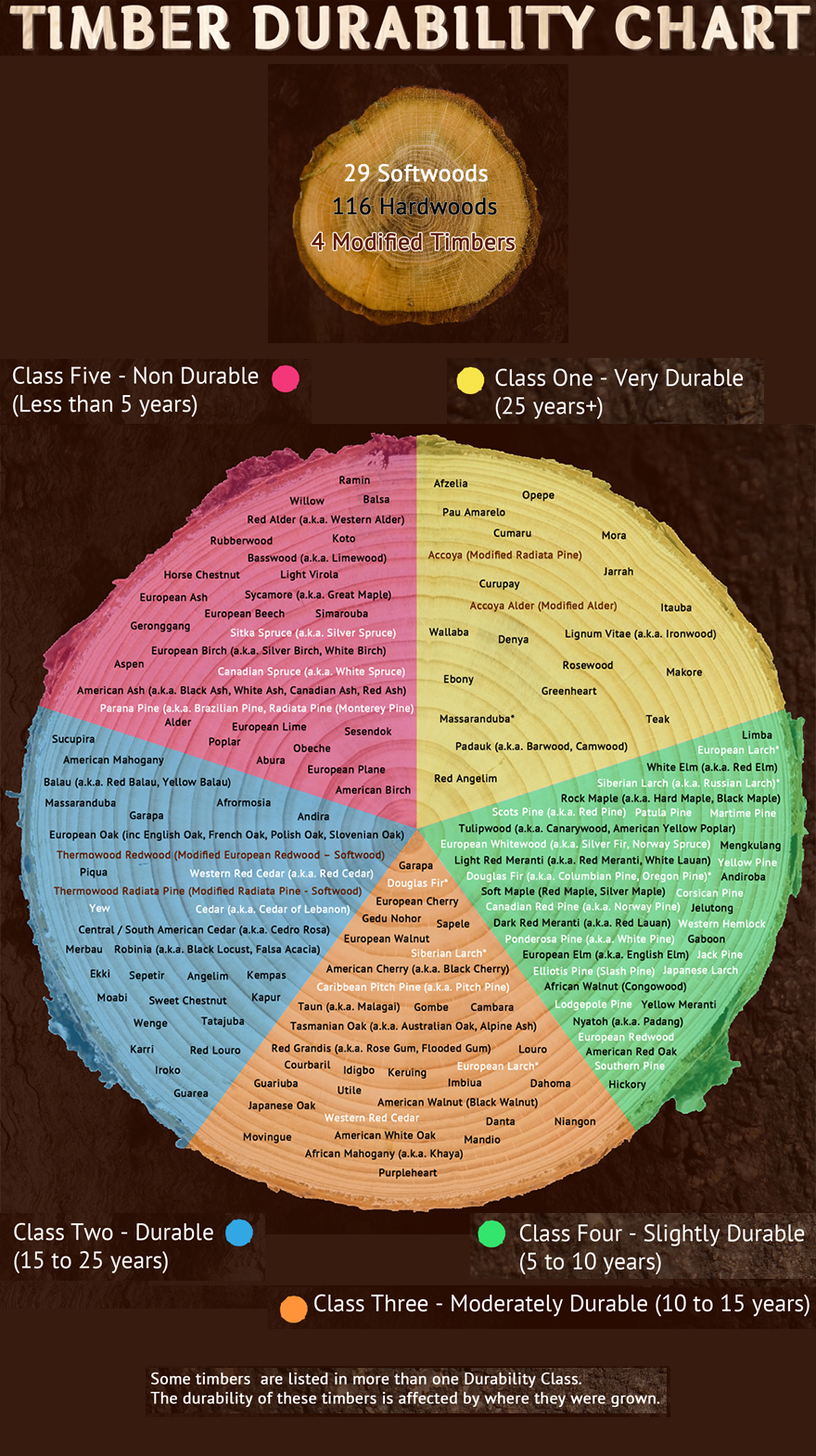
Material Matters: A Handy Wood Durability Chart

Our entries on the types of wood used for boardwalks might have you wondering: What types of wood are more durable than others?
You may recall that in our wood series, we went over the Janka hardness ratings of wood. But when it comes to durability, Janka numbers only tell part of the tale; the hardness rating of a wood has to do with its ability to resist nicks and scratches, and gives you a heads-up on what types of blades you'll need to machine it.
Outdoor durability, on the other hand, has a slightly different scope. Even though wood used in building boardwalks or houses is almost always elevated off of wet soil on concrete pilings, there are other environmental factors the material has to deal with. For one thing, moisture—whether from rain or in the case of boardwalks, sea spray—and the fungi this can bring. On top of that you've got UV rays, temperature changes and pesky insects. Working in concert, this group of difficulties can impact how long a piece of wood can last and continue to serve its function.

While you can find tons of Janka breakdowns online, we couldn't find many charts that specifically linked wood types with durability. So here's one from Woodworkers UK, a Welsh outfit that makes wooden gates and garage doors—items that are meant to withstand the elements for as long as possible. (Graphically speaking, the layout of the chart is a bit confusing, particularly since we had to edit the image to fit our format, but at least all of the info's there.)

-
o1Favorite This
-
Q4Comment
K
{Welcome
Create a Core77 Account
Already have an account? Sign In
By creating a Core77 account you confirm that you accept the Terms of Use
K
Reset Password
Please enter your email and we will send an email to reset your password.


Comments
what about Brazilian walnut - Ypê - lapacho (Tabebuia)? the most durable south american wood?
I'd love to get in touch with these guys and build on their database.
One species that could definitely be added to Class 1 or Class 2 (definitely 15+ years) is Bloodwood a.k.a. Satine. I've used this stuff on a few small projects that have seen a ton of sunlight, rain, and Southeastern US temperature swings, and not only does it maintain its strength and shape, it holds its color in the face of harsh UV rather well, too.